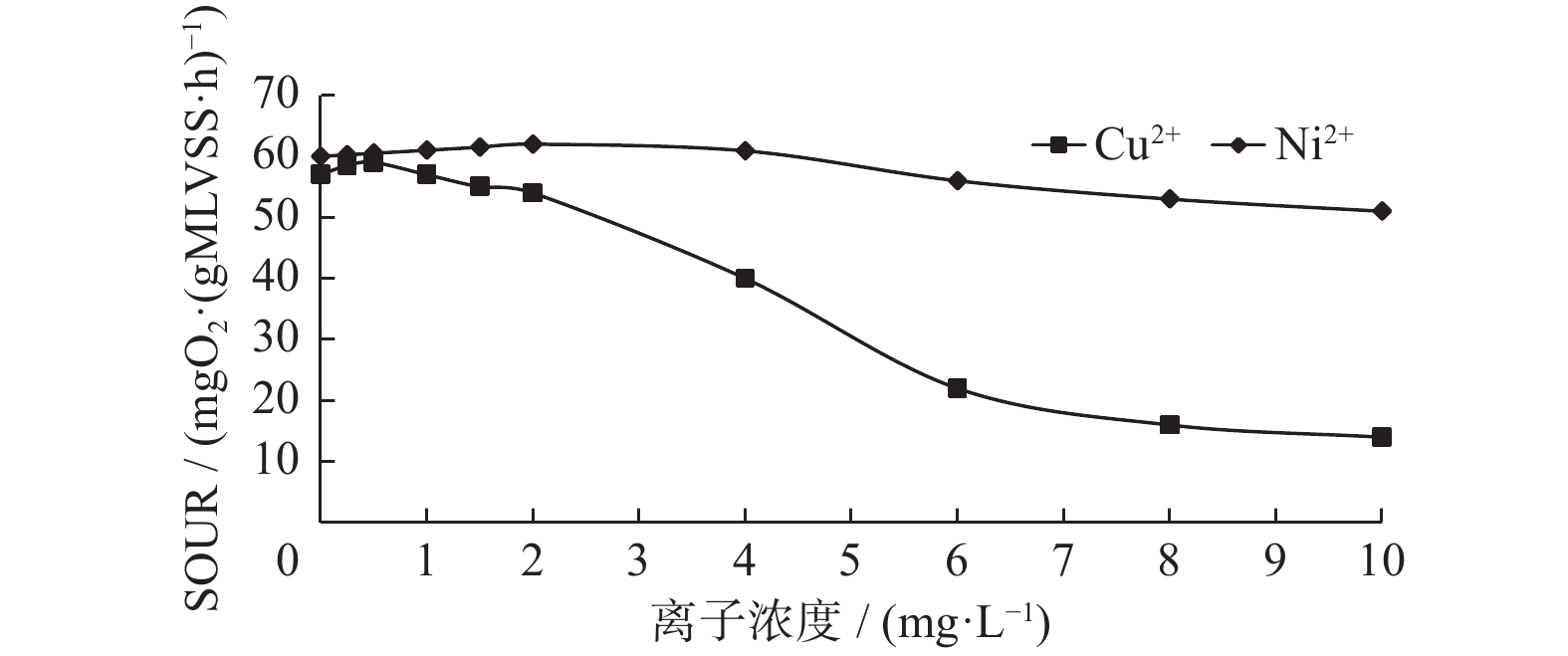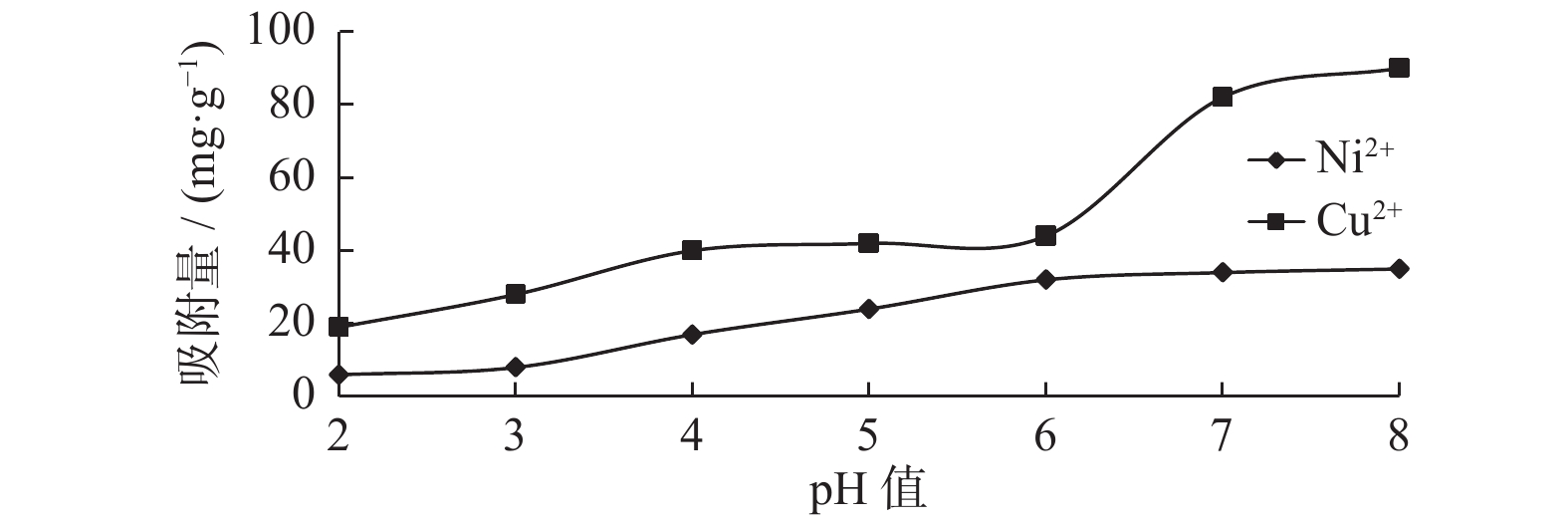Effect of Copper and Nickel Ions on Aerobic Granular Sludge Treatment and Improvement Strategy
-
摘要: 好氧颗粒污泥由于具有微生物量丰富、抗冲击负荷能力强等优点,成为目前处理印染废水的主流方法之一,但印染废水中存在的Cu2+和Ni2+会对好氧颗粒污泥处理过程产生各种影响,使好氧颗粒污泥的处理效果下降. 通过梳理文献分析Cu2+和Ni2+对好氧颗粒污泥微生物种群分布、污泥絮凝沉降性、反应动力学的影响,根据Cu2+和Ni2+对好氧颗粒污泥产生的不同影响提出采取预处理、解吸、调整工艺参数等改进策略. 通过采用改进策略,可使好氧颗粒污泥在不利条件下仍能有效处理印染废水. 研究结论为好氧颗粒污泥进一步探索与应用提供建议.Abstract: Aerobic granular sludge has become one of the mainstream methods for the treatment of printing and dyeing wastewater due to its rich microbial biomass and strong impact resistance. However, the presence of Cu2+ and Ni2+ in the printing and dyeing wastewater will have various effects on the aerobic granular sludge treatment process, which will reduce the treatment effect of aerobic granular sludge. Based on the literature review, the effects of Cu2+ and Ni2+ on the microbial population distribution of aerobic granular sludge, sludge flocculation and sedimentation, and reaction kinetics were analyzed. According to the different effects of Cu2+ and Ni2+ on aerobic granular sludge, improvement strategies such as pretreatment, desorption and adjustment of process parameters were proposed. By adopting improved strategies, aerobic granular sludge can still effectively treat printing and dyeing wastewater under adverse conditions. The research results provide suggestions for further exploration and application of aerobic granular sludge.
-
表 1 铜和镍离子的危害及排放标准
Table 1. Hazards and emission standards of copper and nickel ion
项目 Cu2+ Ni2+ 存在形式 常以硫酸铜、氰化亚铜、焦磷酸铜等形式存在 常以氯化镍、硫酸镍等形式存在 危害 易引起皮炎、湿疹、呼吸系统等疾病;对低等生物和农作物毒性大 可造成严重的肺和肾脏问题、皮肤发炎、大脑脊椎损害等 处理方法 离子交换法、电解法、膜处理法、生物法等 中和沉淀法、硫化钠沉淀法、生物法等 排放标准/(mg·L−1) 2.0(三级标准) 1.0 -
[1] PRONK M, de KREUK M K, de BRUIN B, et al. Full scale performance of the aerobic granular sludge process for sewage treatment[J] . Water Research, 2015, 84: 207-217. [2] ROMOS C, SUÁREZ-OJEDA M E, Carrera J. Long-term impact of salinity on the performance and microbial population of an aerobic granular reactor treating a high-strength aromatic wastewater[J] . Bioresource Technology,2015,198:844 − 851. doi: 10.1016/j.biortech.2015.09.084 [3] 赫国胜. 超滤技术在某电子厂镀铜漂洗废水回用处理中的应用研究[D]. 苏州: 苏州科技大学, 2017. [4] 陈健俊. 含镍络合废水处理技术研究[D]. 上海: 华东理工大学, 2015. [5] 胡怡杉. 微量铜离子对SBR中除磷菌多样性影响的研究[D]. 天津: 天津大学, 2012. [6] GIKAS P. Single and combined effects of nickel (Ni(Ⅱ)) and cobalt (Co(Ⅱ)) ions on activated sludge and on other aerobic microorganisms:A review[J] . Journal of Hazardous Materials,2008,159(2/3):187 − 203. [7] SIRIANUNTAPIBOON S, HONGSRISUWAN T. Removal of Zn2+ and Cu2+ by a sequencing batch reactor (SBR) system[J] . Bioresource Technology,2007,98(4):808 − 818. doi: 10.1016/j.biortech.2006.03.022 [8] 李健中. 重金属对生物脱氮除磷系统中微生物的毒性影响[D]. 广州: 广州大学, 2010. [9] 李冰, 李玉瑛. 镍、铬对活性污泥真实产率的影响[J] . 环境污染与防治,2007(2):151 − 154. doi: 10.3969/j.issn.1001-3865.2007.02.019 [10] CHATTERJEE S, SIVAREDDY I, DE S. Adsorptive removal of potentially toxic metals (cadmium, copper, nickel and zinc) by chemically treated laterite: Single and multicomponent batch and column study[J] . Journal of Environmental Chemical Engineering,2017,5(4):3273 − 3289. doi: 10.1016/j.jece.2017.06.029 [11] MURRAY A, ÖRMECI B. Use of polymeric sub-micron ion-exchange resins for removal of lead, copper, zinc, and nickel from natural waters[J] . Journal of environmental sciences,2019,75:247 − 254. doi: 10.1016/j.jes.2018.03.035 [12] DERLON N, WAGNER J, da COSTA R H R, et al. Formation of aerobic granules for the treatment of real and low-strength municipal wastewater using a sequencing batch reactor operated at constant volume[J] . Water Research,2016,105:341 − 350. doi: 10.1016/j.watres.2016.09.007 [13] BARROS A R M, ROLLEMBERG S L D S, de CARVALHO C D A, et al. Effect of calcium addition on the formation and maintenance of aerobic granular sludge (AGS) in simultaneous fill/draw mode sequencing batch reactors (SBRs)[J] . Journal of Environmental Management,2020,255:109850. doi: 10.1016/j.jenvman.2019.109850 [14] HE Z F, WEI Z, ZHANG Q Y, et al. Metal oxyanion removal from wastewater using manganese-oxidizing aerobic granular sludge[J] . Chemosphere,2019,236:124353. doi: 10.1016/j.chemosphere.2019.124353 [15] TAY J H, LIU Q S, LIU Y. Microscopic observation of aerobic granulation in sequential aerobic sludge blanket reactor[J] . Journal of Applied Microbiology,2001,91(1):168 − 175. doi: 10.1046/j.1365-2672.2001.01374.x [16] 沈祥信. 好氧颗粒污泥快速培养及其吸附重金属的研究[D]. 长沙: 湖南大学, 2007. [17] XU H, LIU Y, TAY J H. Effect of pH on nickel biosorption by aerobic granular sludge[J] . Bioresource Technology,2006,97(3):359 − 363. doi: 10.1016/j.biortech.2005.03.011 [18] IORHEMEN O T, HAMZA R A, ZAGHLOUL M S, et al. Aerobic granular sludge membrane bioreactor (AGMBR): Extracellular polymeric substances (EPS) analysis[J] . Water Research,2019,156:305 − 314. doi: 10.1016/j.watres.2019.03.020 -






 下载:
下载:




